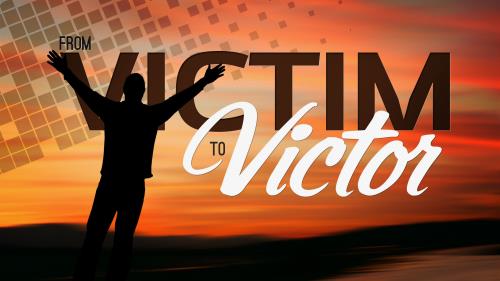-
The Posture Of Victory Series
Contributed by W Pat Cunningham on Nov 28, 2017 (message contributor)
Summary: Kneeling and standing are the characteristic postures of prayer. Standing is the posture of the victorious Christ in Heaven.
Feast of St. Benedict
July 11, 2011
Spirit of the Liturgy
On this patronal feast of our Holy Father, we continue to study his words on the liturgy. Ever since Joseph Ratzinger became Benedict XVI, I have been sharing with you my appreciation of his writings. The Spirit of the Liturgy is an appropriate introduction to his notion of the “reform of the reform” that should accompany our use of the new Missal this coming Advent. This is, in fact, the forty-third homily I have preached on his teachings on liturgical prayer. I promise we will be finished before Advent!
Our Scripture today talks about conflict over the Gospel of Jesus. The Gospel of Matthew was written from stories that came from the earliest days of the Church. It appears that the Jews and the followers of the Way–Christians as we were called in Antioch–“made nice” with each other for a few years. They worshiped together, using the psalms, in the Temple. But the Christians did not offer sacrifices in the Temple; they retired to their home churches to celebrate the Liturgy of Eucharist, the breaking of the bread. Controversy over Jesus and His Resurrection was pretty calm until the apostles ordained the first deacons. The deacons were ordained to serve table, but, like today, they couldn’t keep quiet about their experience of Christ. So we see Stephen, the most outspoken, getting into a heated controversy with the Synagogue of Freed Roman Slaves, being summoned like Jesus before the Sanhedrin, and essentially telling them off over their refusal to follow God’s will. You are well-named, Israel, “God-fighter,” because you have always resisted the Lord’s guidance. And, in the last scene of this drama in Acts, as Stephen is being stoned to death by a mob, we see him kneeling in prayer for his murderers, looking up to heaven and having a vision of Jesus standing at the right hand of the power of God.
Kneeling and standing are the two postures of Christian prayer. We have spent two weeks looking at the kneeling posture, a posture of humility and acknowledgment of our need and weakness before God. Prostration, lying down in God’s presence, is only used when men are ordained, and when the ordained bishop, priest and deacon humble themselves before the overwhelming love of God on Good Friday. When we kneel, we look to God, to Christ rising in the east, with eyes open and cast heavenward. We kneel as sons and daughters. We do not bow our heads down to the earth like slaves, as the Muslim does. We kneel like the Son and servant of God, Jesus, and like the son and servant of God, Stephen, looking at our Lord and Savior who wants to give us Ultimate Goodness, Beauty and Truth.
When we stand, we are assuming the posture of Jesus, triumphant at the right hand of God. We are assuming the posture of the victor. The Council of Nicaea, in 325, actually as one of its pastoral pronouncements forbade Catholics of that era to kneel during the Easter season. Standing is a posture we learned from our Hebrew fathers. “Jesus stands in God’s presence–he stands, because he has trodden death and the power of the Evil One underfoot. At the end of this struggle, he is the one who stands upright, the one who remains standing. This standing is also an expression of readiness: Christ is standing up at the right hand of God, in order to meet us. He has not withdrawn. It is for us that he stands, and in the very hour of anguish we can be sure that he will set off and come to us, just as he once set off from the Father and came to his own across the water, when wind and waves were overpowering their boat. When we stand, we know that we are united to the victory of Christ, and when we stand to listen to the Gospel, it is an expression of reverence. When this Word is heard, we cannot remain sitting, it pulls us up. It demands both reverence and courage, when he calls us to set off in some new direction, to do his will and to carry it into our lives and into the world.” (195)
This year, those of us who have prepared most carefully for the changes that will be coming in our Mass need to help those who have not. Change can bring controversy, even conflict. There is no need for that to happen this year. Share with your family and friends what you are learning about our communal worship–our re-presentation of the Sacrifice of Calvary. Talk to them about increasing our sense of awe at the awesome love of Christ shown in His life, death, resurrection and sending of the Holy Spirit. Then we can use this renewed rite to attract more men and women and children to follow Christ in His Holy Catholic Church.

 Sermon Central
Sermon Central



